How to save corn
Content:
Corn is an affordable, nutritious, very healthy and just delicious product. To enjoy it when the desire arises, it is not necessary to purchase jars of canned grains, because there are many methods for storing corn.
Few people know that it can not only be rolled up in cans, but also dried, frozen. Moreover, not only in grains, but also on the cob. Subject to certain rules, even a fresh ingredient can be stored for longer than a few hours. The time-tested approaches are designed in such a way that they maximize save all the benefits, aroma and taste of the cereal.
Features of storing fresh corn
To preserve the sweetness of the product, you need to free the cobs from the grains as quickly as possible and properly carry out the appropriate processing. In this case, the product will delight with its original taste and aroma for another three weeks.
At home, this can be done as follows:
- We clear the corn of dirt, fibers and leaves, put it in a wide pan.
- Pour cold water into another container, a little less in volume, add ice cubes. Next, we introduce lemon juice and salt based on a teaspoon of each product per liter of water.
- Stir the liquid and pour the ears with the resulting solution, leave to soak for 20 minutes.
- Then, right in the water, we separate the grains from the base, throw out all the dirt, drain the water, throwing the corn into a colander.
- Having got rid of excess water, we slightly dry the grains and lay them out in plastic bags with locks. They should not be filled too much, but the air needs to be released to the maximum.
- We remove the product in the refrigerator, to extend the shelf life of the ingredient, you can use the freezer.
If desired, such a workpiece can be boiled, canned, or added to the cooking dish. The main thing is that the ingredient undergoes appropriate heat treatment.
Options for storing corn on the cob
Most often, corn is harvested on the cob for the winter. This approach allows you to preserve its sweetness, although it requires much more space, especially with an impressive harvest. The exposure option is selected depending on how much it is planned to store the product at home:
- Refrigerator. We clean the cobs of leaves and fibers, distribute them in unwashed plastic bags. We remove the packaging in the refrigerator, using a separate tray or shelf. Such corn is best eaten within three days. They will keep freshness longer, but the desired sweetness in grains will no longer be.
Tip: This approach is categorically not suitable as storage of corn for making popcorn. Even with suitable humidity, the seeds will swell slightly and their skin will soften. This will negatively affect the cooking process and the final result.
- Drying. We sort out the corn, remove the fibers, do not cut the ears, just open. We hang the blanks in the attic or in another dry and well-ventilated room. You can place them separately or weave several braids, saving space.
- Freezing This approach allows you to store corn at home from a year to a year and a half. Before freezing corn for the winter, it is necessary to carry out a series of manipulations aimed at its processing. If you just put the fresh product in the freezer, you get tasteless rubber grains at the exit.
In addition, corn can be preserved. There are many recipes that allow you to roll up grains in their pure form or as part of ready-made dishes. Especially popular today are the conservation of small ears of corn, which are even used in food along with the base.
How to store boiled corn?
Every housewife knows how to properly boil the ears of sweet cereal, but how to store corn after such a treatment is a question that haunts so many. There may be two options for the approach:
- If the product was prepared in a standard way and they just did not have time to eat it right away, then you need to put the ears in a separate container and wrap it with cling film. They can be kept in the refrigerator for no more than three days. In order for the grains to retain their juiciness, it is recommended to pour them with the remaining broth.
- If it is known in advance that corn will need to be stored after cooking for some time, then it is worth trying a special type of processing available at home. First, boil the cobs for 10 minutes, cool them and remove the grains. We fill them with steam sterilized cans, leaving a couple of centimeters of space on top. Pour boiled water with a little salt, close the lids. We put the containers in the refrigerator, after a couple of weeks you can add some more liquid. In this state, the grains will retain taste for 2-3 months.
Before consuming a standing product, you need to make sure that there are no extraneous odors from the grains themselves and the fill.
Technology for freezing corn kernels and ears
Before you freeze corn for the winter, you need to decide on the approach to work. Billets can be in the form of ears or individual grains. This practically does not affect the process technology, but it is more convenient to store grains, and ears will give corn an unusual juiciness and sweetness.
When working with cobs, we act according to the following scheme:
- We clean the ear of leaves, fibers, substandard grains, cut off its tip.
- We prepare two pots - with cold water and boiling water.
- First we spread the cobs in hot water, wait a couple of minutes, shift to cold and also wait a couple of minutes. We repeat the manipulation 3-5 times.
- We spread the cobs on a thin towel without lint and wait until they dry well.
- Next, each fruit is separately wrapped with cling film and sent to the freezer.
Corn frozen in this way should be properly thawed before cooking. It needs to be kept in the refrigerator for several hours. It is strictly forbidden immediately after removing from the freezer to lower the ear in boiling water, the product will turn out rubber.
The approach with individual grains differs from the previous procedure only in the last step. We parse the dried and cooled cobs into separate grains and put them in plastic bags with locks, and then put them in the freezer. During freezing, the container can be shaken several times so that the grains do not stick together. If all stages of the manipulation were done correctly, then the workpiece will not even have to be sorted out, there will be no spoiled elements in it.

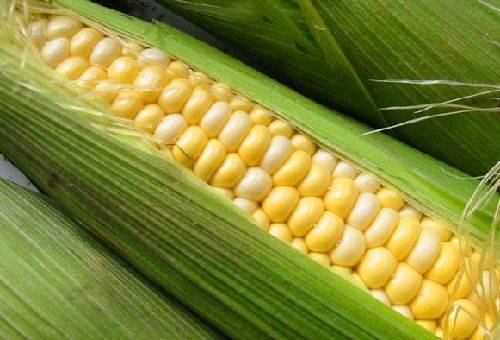
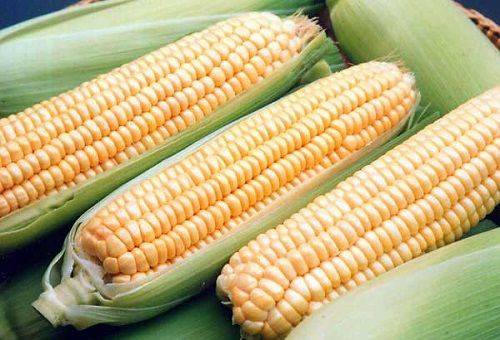
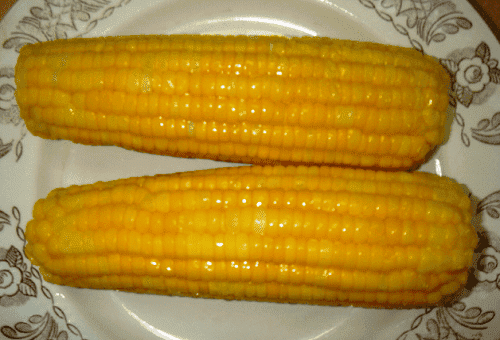
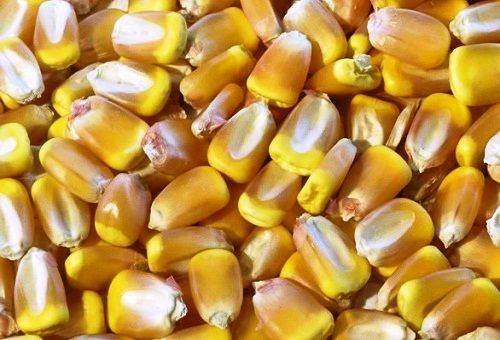
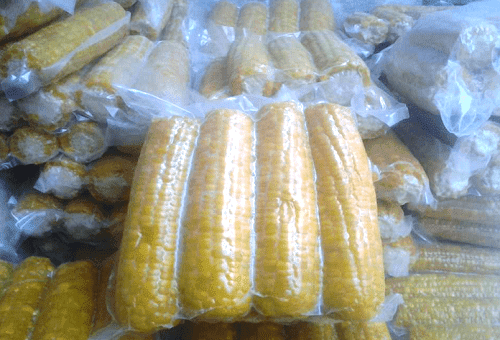
Thank you, I found out one very useful hint!